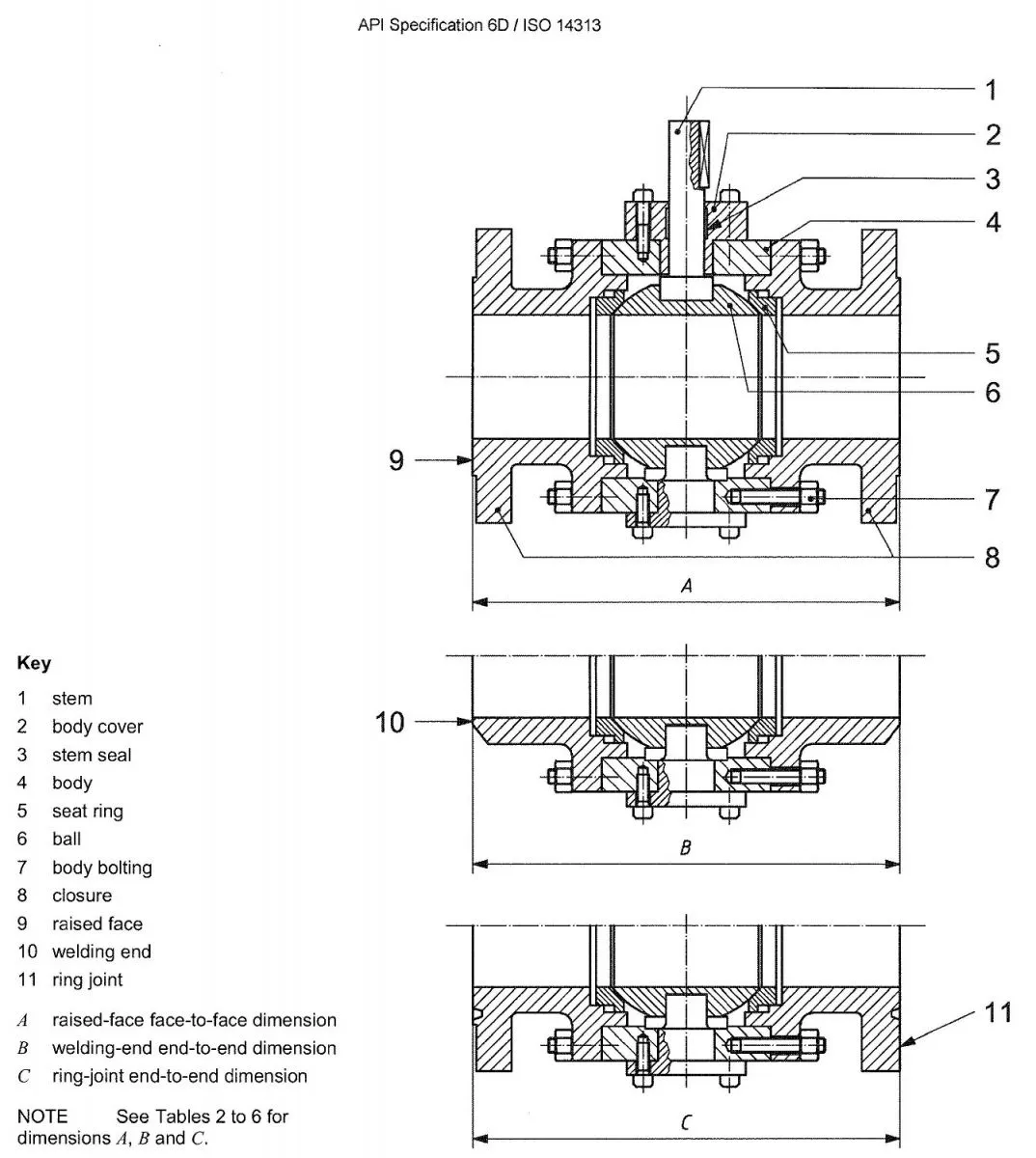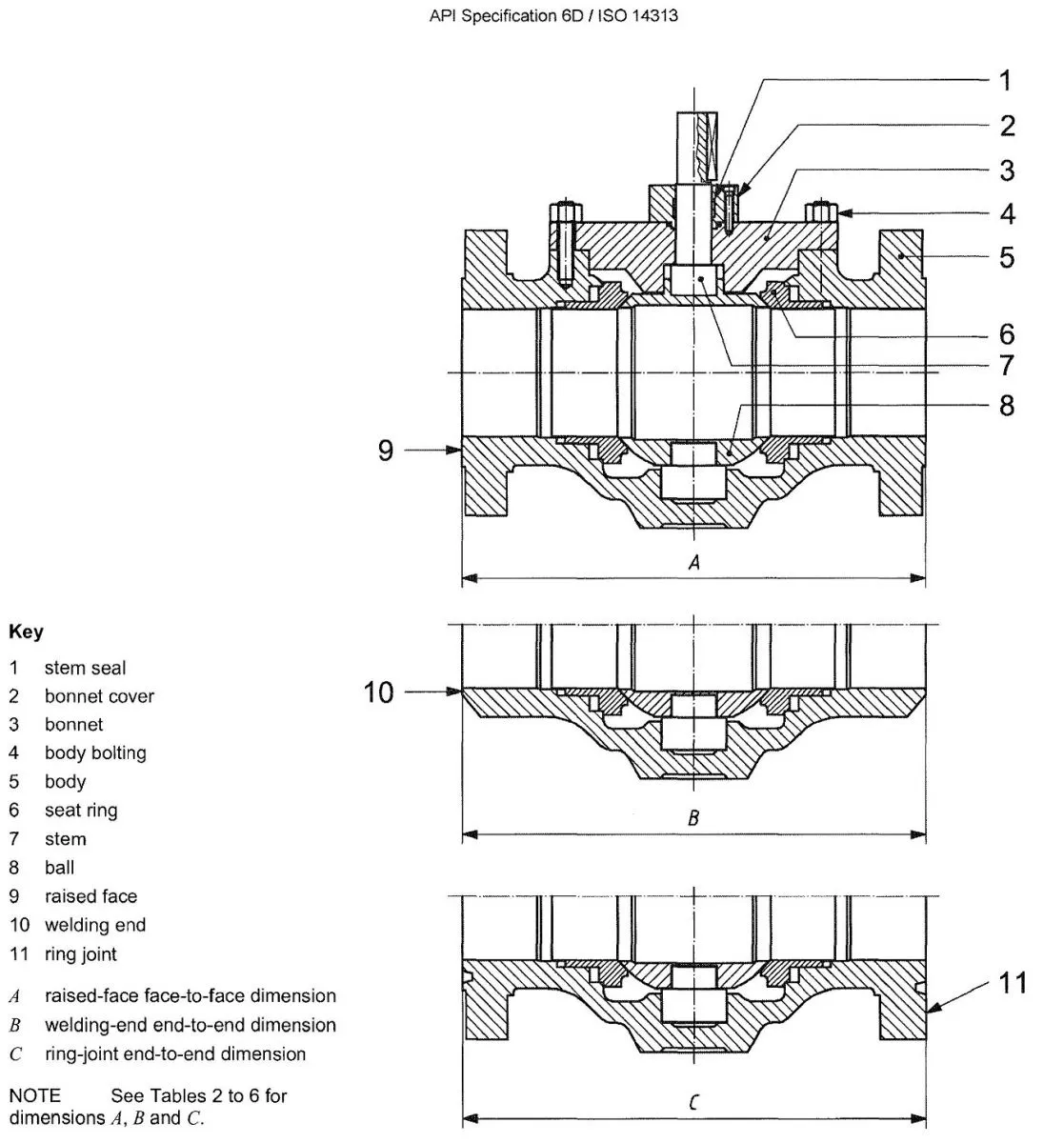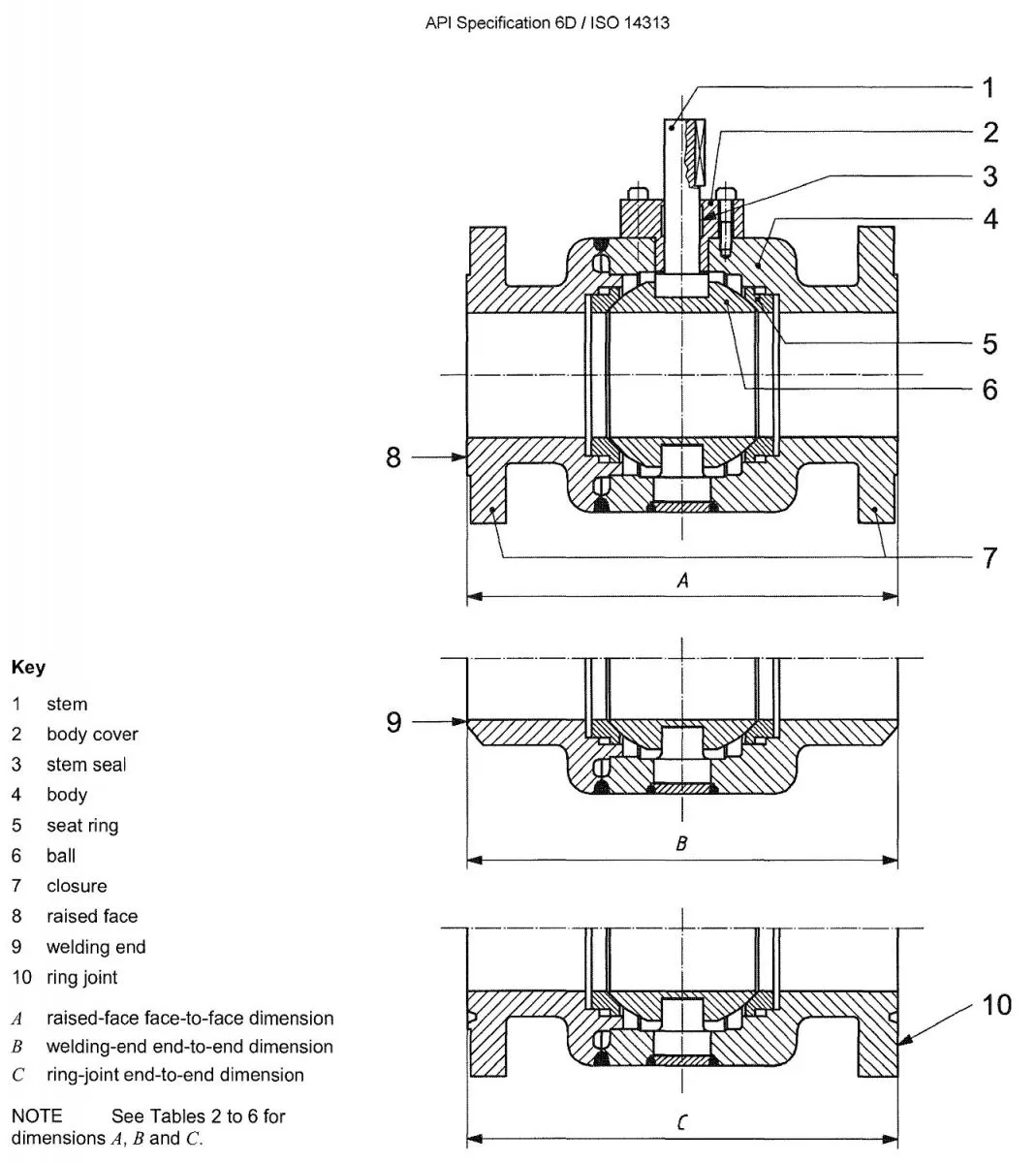API6D Ball Valve Types and Features
1. API 6D Certified
The API 6D is the specification for Pipeline Valves. It is the primary standard based on the ISO 14313 that specifies the requirements of valves and offers suggestions for the design, manufacture, inspecting, and notation of check, ball, plug, and gate valves in pipework systems.
2. Types
API6D Ball valve has three types.
(1) Trunnion Mounted Ball Valve API6D API 607
A trunnion ball valve is a quarter-turn valve that has a perforated and fixed ball to manage flow passing through. Its design has an added mechanical anchoring at the top and the bottom of the ball. This trunnion mounted stem takes in the pressure, preventing more friction between the ball and seats. It allows the operating torque to remain low even at high-working pressure.
Available in different options, such as two-piece and three-piece, top entry, various customization offer the best solutions for specific requirements. All in all, their design ensures central positioning even in applications with extreme pressure. Due to their independent-floating spring-loaded seats, a tight seal is guaranteed even at low differential pressures. The bolted body design of the API 6D ball valves provide simpler service and maintenance, making them suitable for above and buried installations.
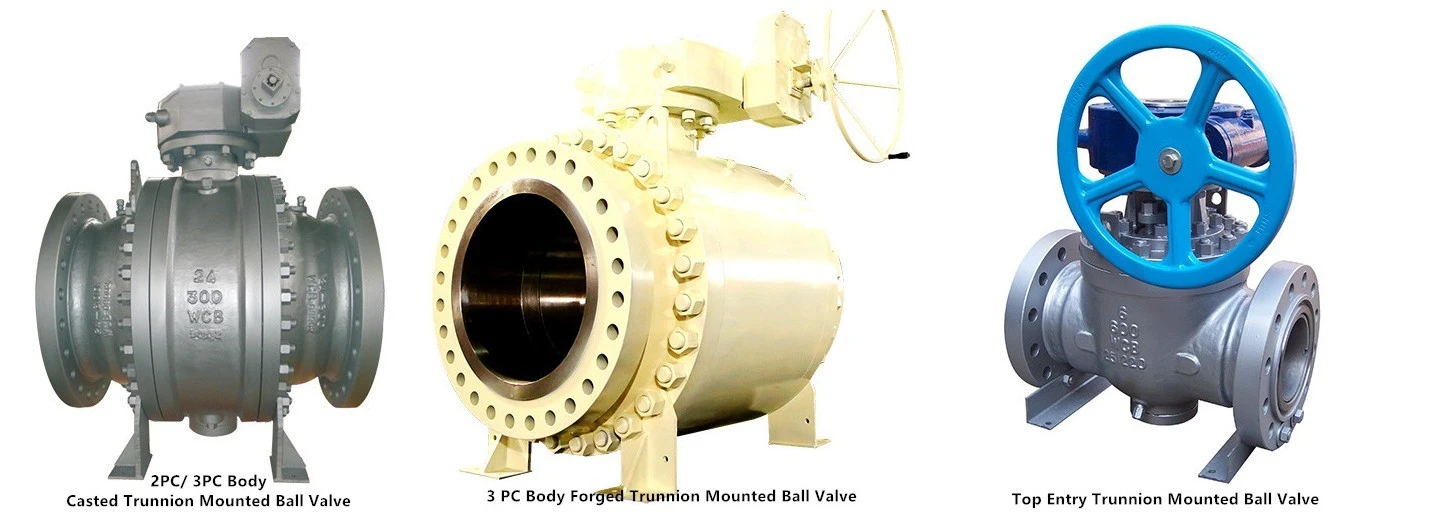
(2) Floating Ball Valve API 6D API 607
A floating ball valve is held in position only by adhering to the stem. This causes the ball to sometimes float downstream, allowing it to press against the seat and provide a positive seal. It can ensure a complete media shut-off of process media under critical service conditions.
To suit different service conditions, floating ball valves are in various design options and features. They are equipped with an anti-static device, blow-out proof stem, and a fire-safe design. Based on the service, these ball valves can either have a cast or forged steel body.
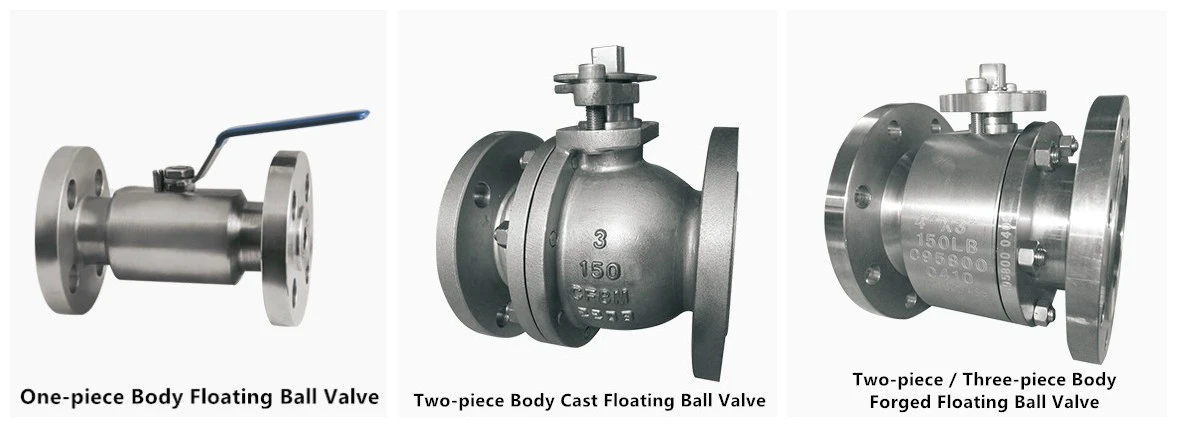
(3) Double Block and Bleed Ball Valves (DBB Ball Valve)
Efficient in weight and space, a double block and bleed ball valve consists of two isolation ball valves and one bleed valve in a single valve assembly. Hence, it promotes less work during installation and maintenance. This allows the operator to find and control all three valves in a single location.
Its main function is to simultaneously isolate upstream and downstream lines while bleeding the body to maintain stable isolation. As its verified zero leakage, it is suitable for crucial services, such as toxic fluid operations and high-pressure systems.
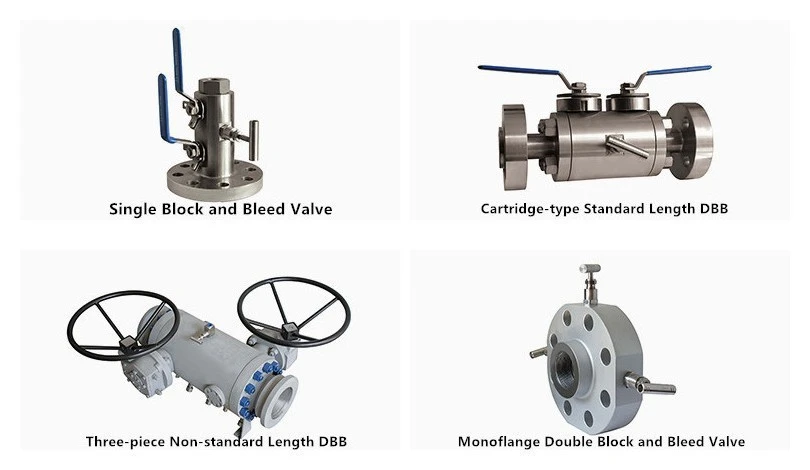
3. Design Features
Generally, API 6D Valves are equipped with these design features.
(1) Full and Reduced Bore
A full bore means the valve bore or port has a similar diameter with the pipe. It is used in media that contain mixed solids and liquids where flow restrictions could lead to separation of the substances. This could further lead to buildups that will reduce the desired flow in the pipes.
A reduced bore valve has a smaller bore diameter than the pipe it is on. It is lighter compared to a full bore valve and is ideal where weight and cost are important factors. Also, a reduced bore is suitable in services where the pressure drop through the ball valves does not have a significant effect during operations.

(2) Fire Safe Design
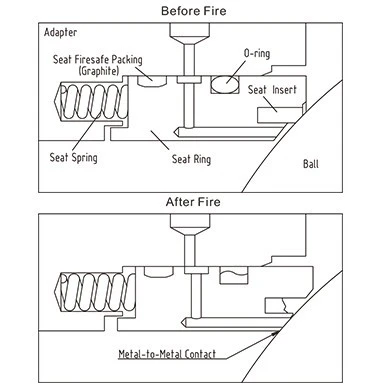
A. Trunnion Mounted Valves
For trunnion mounted valves, internal leakage prevention is ensured by an O-ring design. When the primary O-ring is damaged by plant fire, the spring-loaded metal seats will come in contact with the ball to shut off fluid flow. This will minimize the leakage of the internal process medium. The secondary graphite seal will also prevent leakage between the seats and valve caps during and after the fire.
The external leakage prevention is double insurance to the fire-safe function. The primary O-ring and secondary graphite gasket will seal possible external leakage between the stem and gland flange, gland flange and body, body and adapter. When the resilient o-ring gets burned out by fire, the secondary graphite gasket seal can still prevent external leakage of the process medium.
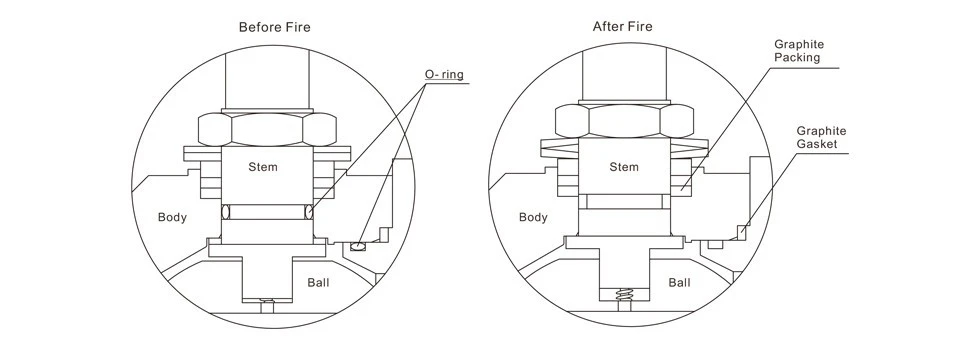
B. Floating Ball Valves
When it comes to floating ball valves, they are equipped with a double-proof fire design to ensure safe and efficient operations.
For its internal leakage prevention, when fire damages the primary soft seat seal, the upstream pressure will push the ball downstream against the secondary metal seat lip. This is to shut off the process medium and prevent internal leakage through the valve bore.
All possible external leakage points are made with a primary O-ring seal and secondary graphite packing or gasket seal. These points are found between the stem and body, the body and adapter. Even when fire damages the primary O-ring, the secondary graphite gasket seal will secure the process medium and prevent external leakage.
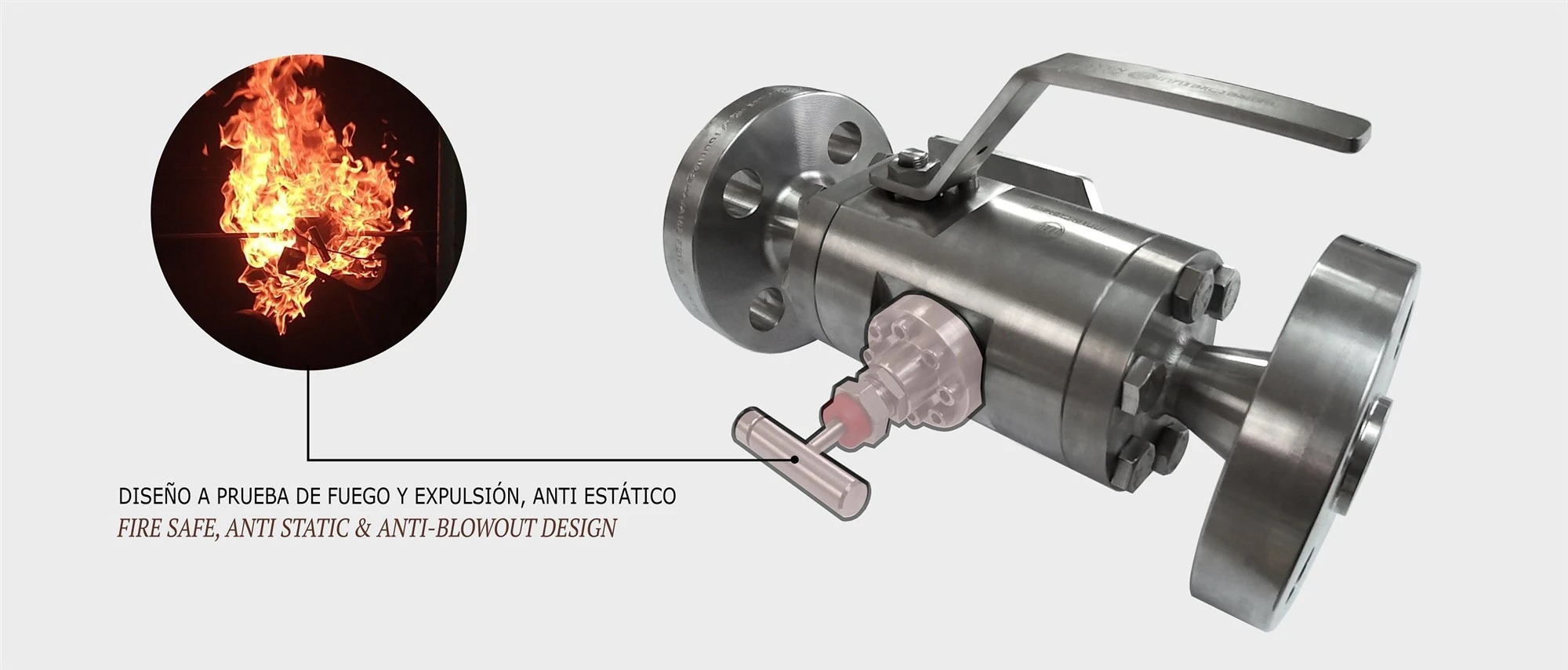
C. Double Block and Bleed Ball Valves
To help minimize internal leaks in case of accidental fire, when sealing materials are damaged during a fire, the metal seat retainers will connect with the ball to stop fluid flow to control internal leakage, so as to prevent fire. The secondary graphite seal will further help prevent leaks during and after the fire.
While double sealing feature will prevent external leaks from the valve stem area. The O-rings and graphite seal will act as protection against leakage throughout the valve body. Even after an accidental fire has burned down, the o-rings and graphite seal will stay intact to prevent external leakage.
Anti-static Device
A. Trunnion Mounted Valves
For further fireproof safety, an anti-static device is an excellent addition. Anti-static spring-loaded balls are attached between the stem and the bonnet and between the stem and the ball. They will maintain electrical conductivity in all metallic components. The anti-static device will also reduce the static charge on the ball due to friction. It protects the valve from a spark that could ignite the fuel passing through the valve.
B. Floating Ball Valves
Floating ball valve uses a static-conduction spring between the ball and the stem, and the stem and the bonnet. This prevents static electricity, which could lead to igniting flammable process media.
C. Double Block and Bleed Ball Valves
When the valve operates, the friction between the metal ball and soft seat will cause friction and static charge inside the body. This increases the risk of spark and ignition of flammable liquid. The anti-static device produces a ground path and maintains electrical continuity between the valve body, stem, and ball.
(4) Blow-out Proof Stem
An anti-blow out stem contributes to the stability and service life of the valve. It means the stem is isolated from the valve body to prevent the risks of a blowout. The stem is held by stem housing, secured by the body. When there is high pressure on the valve, the stem will be kept in place by the stem housing preventing it from flying off.
4. Operation
(1) How does a Trunnion Mounted Ball Valve Work?
A trunnion mounted ball valve has a sphere-shaped disk to start or stop the flow. This disk has a port, also called a bore in the middle portion. It becomes open and allows liquid flow when the valve is positioned so that the port is in the same angle as the pipeline. When the port is turned 90 degrees, the ball valve will close. This closes the flow path and keeps any substances from passing through.
The anchoring system of the trunnion mounted valve allows it to absorb more pressure from the pipeline. This will prevent excess friction affecting operations as well as the lifespan of the valve. It also comes with an extended stem, making it applicable for both cryogenic and high-temperature applications.
(2) How does a Floating Ball Valve Work?
Similar to other ball valve types, floating ball valve has a spherical disc (ball) to open and shut media flow. It has a compact design, allowing easy and quick operation of the valve.
The ball inside the ball valve, has a hole to allow or obstructs process media flow. When the hole is aligned with the two ends of the valve, media flow goes through freely. But when it is in a different position, like vertical to the valve ends, the passage flow is blocked. In a floating ball valve, the ball is suspended in the flowing media. It is held in position by the compression of the two seats against it.
The shaft is attached at the top of the ball for an open or closed position through a 90-degree movement. The ball receives pressure through the shaft movement, so it is pressed against the ball seats.
(3) How does a Double Block and Bleed Ball Valve Work?
A double block and bleed valve has three valves in one-two isolation valves, usually ball valves, and one drain valve, usually a ball or needle valve. The valves are installed as a manifold or unit to provide positive isolation.
The double block bleed valve is used to prevent fluid flow from getting into an area where there is continued work. This is to keep the fluid or steam in the upstream line from reaching the components in the downstream line of the system. Both of the isolation valves will close completely to secure the bleed flange or cavity. The drain valve will then open to drain the fluid or steam. It can ensures safe working on the depressurized area of the system.
5. Application
(1) Turnnion Mounted Ball Valves
A. Industrial Gas Processing Plants
Generally huge and costly, any mistake could be an eventful expense in the industrial gas process plants. Trunnion mounted ball valves provide accurate flow control, which is essential in these plants. With their tight shutoff feature, they will promote the overall performance, reliability, and safety of the processing plants.
B. LNG (Liquefied Natural Gas) Plants
For LNG plants, they also need precise flow control. With environmentally-safe and reliable valves, LNG plants will become compliant with environmental standards. They will also have reduced noise, fugitive emissions, and vibration, thus ensuring smooth and steady operations.
C. Chemical Industry
Offering different ranges of temperature and pressure ratings, trunnion ball valve design is useful in the chemical industry. With a perfect shutoff, trunnion type ball valves are also ideal for handling hazardous media. They are made with special materials, like a stainless steel sealant, for durability and long service life.
D. Hydrocarbon Processing
Trunnion ball valves have AED o-rings, which are suitable for high-pressure gas applications, particularly hydrocarbon processing. Due to these demanding operations, the typical o-rings may suffer damages. AED o-rings are designed for this type of environment, promoting tight sealing with no errors.
(2) Floating Ball Valves
A. Chemical industries
Required positive sealing and zero leakage, chemical industries usually use floating ball valves to guarantee zero leakage. Also, floating ball valves are made from materials with excellent resistance to corrosion and abrasion. This ensures safety, reliability, and longer service life to valves.
B. Oil and Gas Industries
The oil and gas industries involve an array of industrial applications, such as hydrocarbon processing, oil refinement, gas production and more. All of these applications require a positive shut-off. The floating ball valve ensures sealing as it is influenced by the system pressure.
Usually involved high pressures in oil and gas industrial, floating ball valves are equipped with a blow-out proof stem to prevent the stem from flying or blowing out.
C. Food and Beverage Industries
The sterility of operations in Food and Beverage Industries are important. The entire operation of these industries is crucial to their end products. Floating ball valves will provide reliable sealing that guarantees no unnecessary mixing and contamination will happen to the process media.
D. Hydrocarbon Applications
A floating ball valve is designed to meet the requirement of hydrocarbon processing environment. For their media flow, there are some aggressive contaminants causing corrosion and abrasion. Made with durable materials like stainless steel and carbon steel, float ball valves can withstand such conditions.
(3) Double Block and Bleed Ball Valves
A. Oil and Gas Industry
Because the process and transmission of oil and gas require no leakage during the entire operation. Known for preventing any leak, double block and bleed ball valves are widely used in the oil and gas industry.
B. Petrochemical Industry
Chemical stamping and injection require a guarantee that there will be no potential leaks. A DBB valve is helpful in petrochemical applications to control hazardous chemicals and toxic waste. Its interlocking feature will prevent any leakage or mixing of liquid with critical elements.
C. Water Services
For water services near municipalities and waterways, they need crucial isolation to prevent leaks. A DBB ball valve can provide a tight seal to both upstream and downstream lines without being affected by pressure and vibrations. Once leaks are identified, the block valves will close to isolate the spill and prevent further damage
